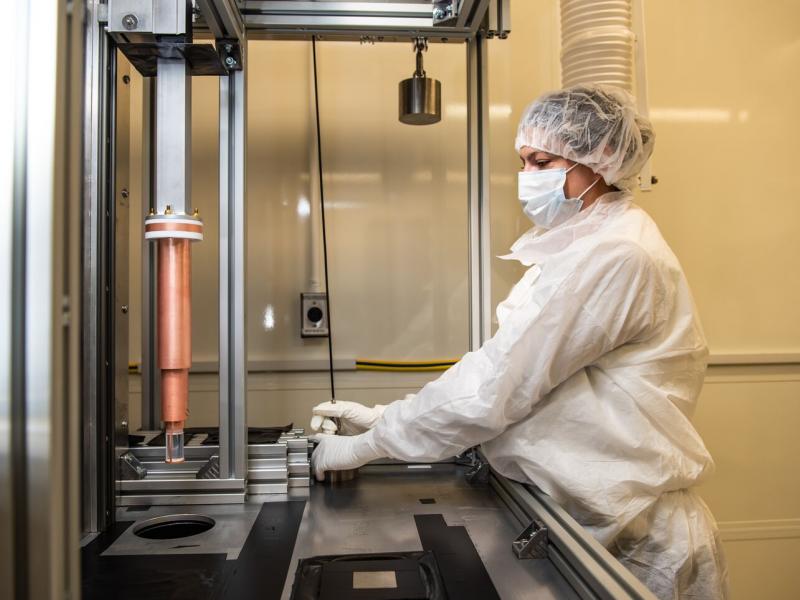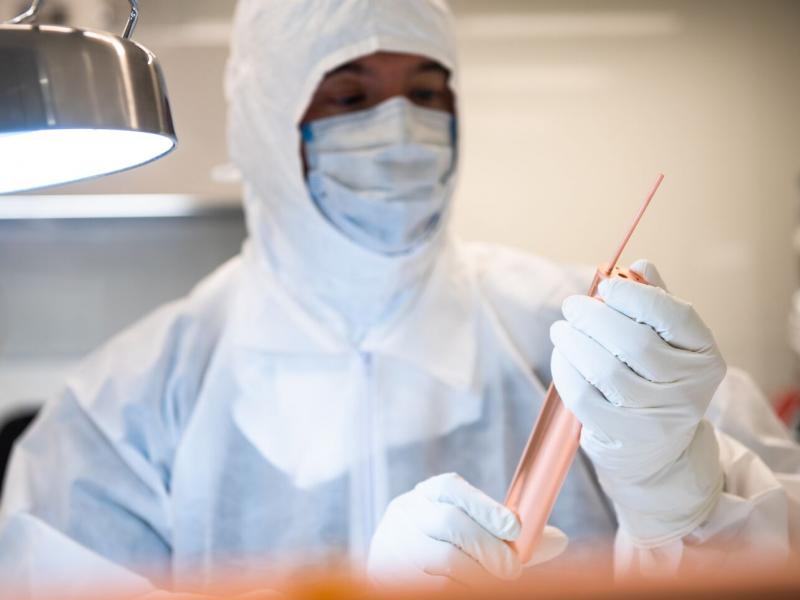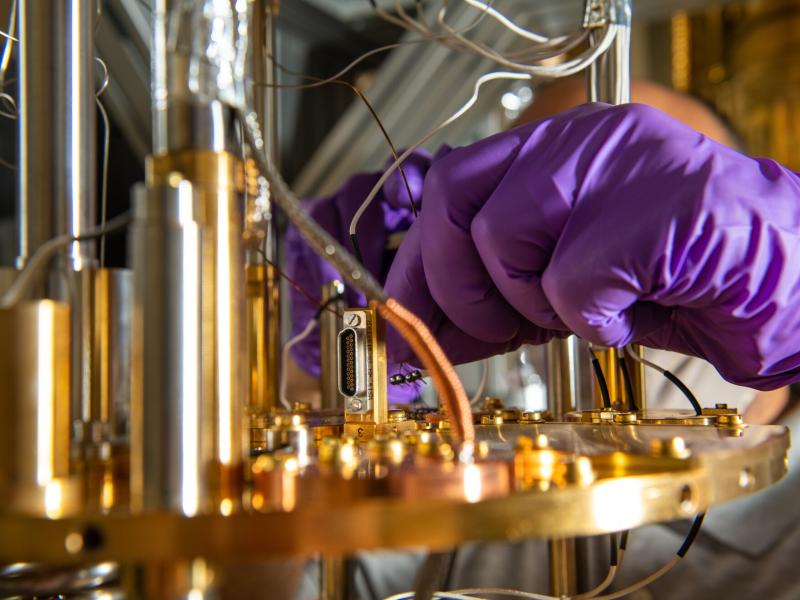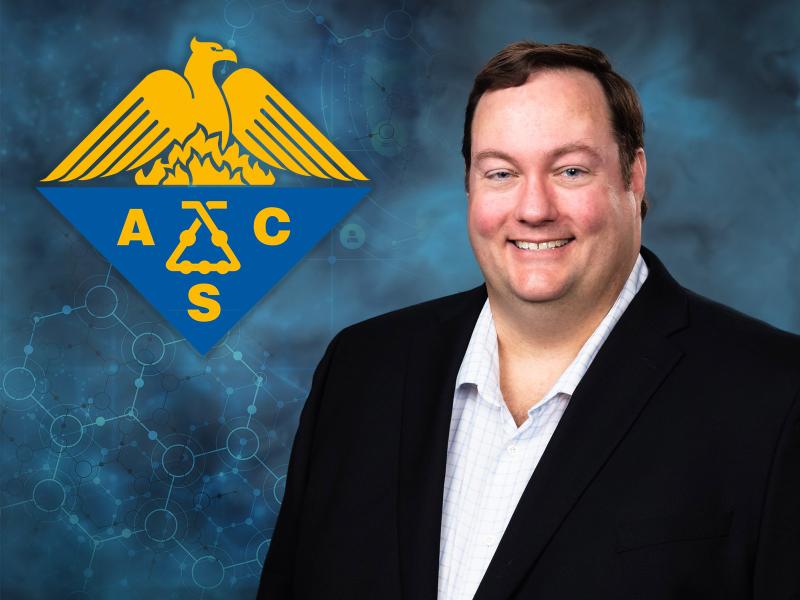
Ultra-Sensitive
Nuclear Measurements
Detecting and measuring very
small amounts of radioactivity
Physicist Emily Mace loads a copper detector with a low-level radioactive gas sample into an Ultra-Low-Background Counting System in PNNL’s Shallow Underground Laboratory.
(Photo by Andrea Starr | Pacific Northwest National Laboratory)
One of our signature capabilities at Pacific Northwest National Laboratory (PNNL) is the detection and measurement of very small amounts of radioactivity. This ultra-sensitive nuclear measurements capability is built on four main elements: ultra-pure materials, ultra-sensitive radiation detection systems, measurements inaccessible by other means, and the applications uniquely enabled by these measurements. The mission space for this capability spans national security, fundamental physics, and environmental science applications.
All of these elements come together in PNNL's Shallow Underground Laboratory. This cleanroom facility, located 40 feet underground, provides shielding against radioactive backgrounds induced by cosmic rays.
National security
Ultra-sensitive nuclear measurements support a range of nuclear nonproliferation applications and are foundational for detecting nuclear explosions for compliance with the Comprehensive Nuclear-Test-Ban Treaty. The radioactive isotope argon-37 can be produced in nuclear explosions, which means argon-37 can also be used to detect them. PNNL is one of only two laboratories worldwide that can measure argon-37 at environmental levels.
PNNL researchers are also exploring how analytical and computational techniques such as machine learning can further reduce backgrounds and provide quantitative reporting from these ultra-sensitive measurements.

Fundamental physics
Ultra-sensitive nuclear measurements support increasingly more sensitive searches for dark matter and rare nuclear interactions that can expand our understanding of the universe. For example, the ultra-pure materials that are part of this capability are key design elements in large international fundamental physics experiments like the Majorana Demonstrator. The Majorana Demonstrator experiment searches for evidence of non-standard properties of neutrinos, subatomic particles important for understanding the composition of the universe and solar evolution.
Environmental science
The detection and measurement of very small amounts of radioactivity can be used to increase our understanding of environmental systems and pathways. As an example, PNNL is one of only two laboratories worldwide that can use ultra-sensitive radiation detection to determine the age of groundwater by measuring the abundance of the radioactive isotope argon-39 at levels far below those seen in the atmosphere. Scientists can use this information to determine residence time of water in aquifers and better understand this critical natural resource.

Low Temperature Material Science
PNNL researchers engage in a broad range of scientific activities that rely critically on the ability to cool samples and instrumentation to ultra-low temperatures that are only a fraction of a degree above absolute zero. PNNL currently houses two state-of-the-art dilution refrigerators. These devices allow researchers to explore materials properties and device performance at millikelvin temperatures, which are colder than deep space—1 millikelvin equals nearly −459 degrees Fahrenheit—and provide a "quiet" environment to study materials properties that would otherwise be wiped out by the latent energy of the environment. The search for dark matter and quantum information science research both benefit from the ultra-low temperatures enabled by the dilution refrigerator.
One of PNNL’s dilution refrigerators is installed in the Shallow Underground Laboratory. Due to this laboratory’s unique construction, the dilution refrigerator is further shielded from the environment, allowing studies of materials and devices that can be sensitive to interaction with both ambient thermal energy and the ever-present cosmic radiation that makes its way to the Earth's surface. The combined dilution refrigerator and cutting-edge underground facility present a unique capability among the national laboratories—enabling the cryogenic study of materials and devices and helping answer fundamental scientific questions about the origins of the universe.


